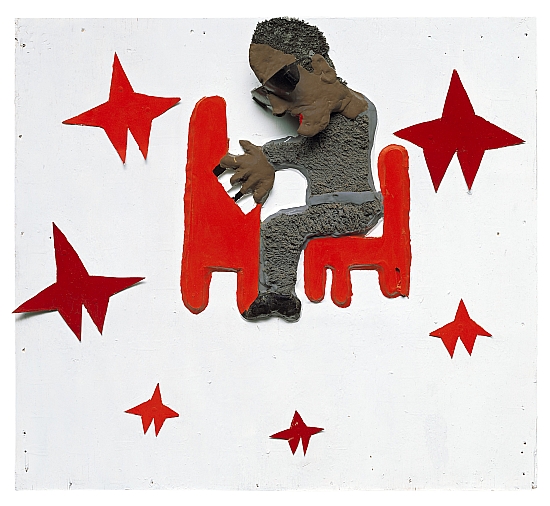In A Man Can Be a Star, the blind jazz and rhythm-and-blues musician Ray Charles, among the most celebrated of American artists, is represented in very dark colors, seated in a bright red chair at a bright red piano against a stark white background, visually powerful and dominating, and wearing an actual pair of sunglasses. The seated figure is attended by several large and smaller red and brown stars. The signification of Ray Charles as a great figure among the greatest "stars" is unmistakable and graphic. The ubiquitous sunglasses that identify this special blind man at a piano (recall, too, his younger kinsman, Stevie Wonder) appear to be shielding him from the brilliance of the surrounding stars and his own reputation. But most conspicuous are the dark-brown and black colors of the figure's hair, skin, and clothes. A Man Can Be a Star vindicates black humanity by its forceful depiction of this one black man as prominent among a field of stars (compare the field of stars on the United States flag). The signifying trick in the wordplay and imagery of this man-as-star also signifies his people's transcendence of their more typical, more lackluster existence. A Man Can Be a Star signifies that a whole people, too, may transcend their conditions and thus vindicate their humanity; signifies, too, "a people be stars."
